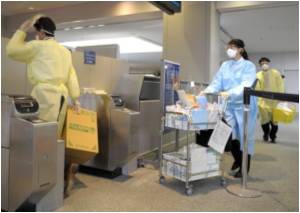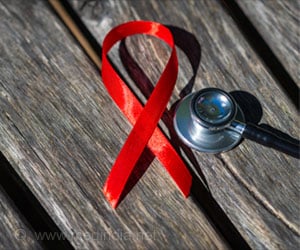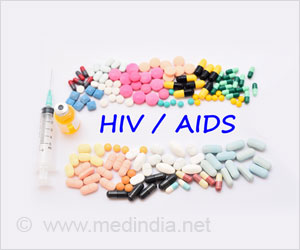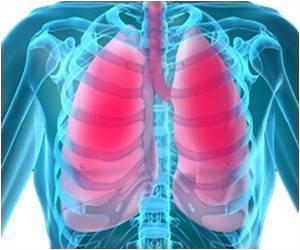Lack of protection from HIV and other bloodborne infections during surgical and other procedures is seen among health care workers in some of the world's poorest countries, suggests a research.

The Ebola virus is spread through direct contact through broken skin or mucous membranes with the blood, secretions, organs or other bodily fluids of infected people, and indirect contact with environments contaminated with such fluids. More than 1,300 have died during the current West-African outbreak and transmission has frequently occurred when health care workers treating patients with suspected or confirmed Ebola have been infected. This has often occurred through close contact with patients when infection control precautions are not strictly practiced.
"Sadly, one of the only benefits of the Ebola crisis in West Africa may be to highlight the baseline lack of personal protective equipment such as eye protection, gloves and aprons for health care workers," says study leader Adam L. Kushner, MD, MPH, an associate in the Johns Hopkins Bloomberg School of Public Health's Department of International Health. "These items are crucial to protect health care workers today, but were lacking long before the current crisis. We've seen this for many years with HIV."
Despite the billions of dollars that have been spent on HIV, one area that has remained relatively ignored is protective gear, the researchers write. In west and central Africa, as many as 5 percent of the population are HIV positive, making the dearth of protective gear all the more striking.
For their study, Kushner and his colleagues reviewed surveys from 399 hospitals in 13 low- and middle-income countries – Afghanistan, Bolivia, Gambia, Ghana, Liberia, Mongolia, Nigeria, Sierra Leone, Solomon Islands, Somalia, Sri Lanka, Tanzania and Zambia.
Overall, only 29 percent of hospitals always had eye protection, 64 percent always had sterilizing equipment and 75 percent always had sterile gloves. The range was wide among countries. For example, in Afghanistan, only one-quarter of hospitals had sterile gloves, while 100 percent of facilities in Nigeria and Bolivia had sterile gloves.
Advertisement
The necessity of protection for health care workers, especially those in surgical settings, has been well documented. One study showed that double gloving of health care workers during surgery resulted in an 80 percent reduction in perforations to the inner glove, preventing exposure to blood through openings in the skin. The same study found that more than half of the exposures to blood in sites other than the hand would have been prevented by the use of face shields, waterproof gowns and waterproof boots.
Advertisement
"We can all learn from this new epidemic and be better prepared for the next one by remembering that inexpensive protective equipment can keep doctors and nurses safe from infection – and better able to care for patients who need them," Kushner says. "It is imperative that we make this a priority."
Source-Eurekalert












